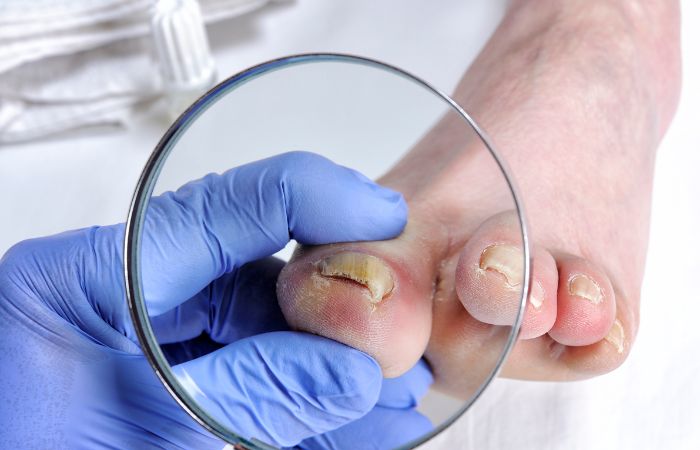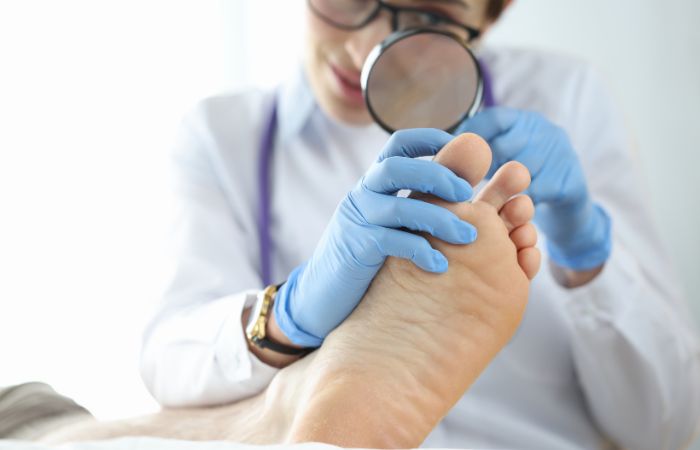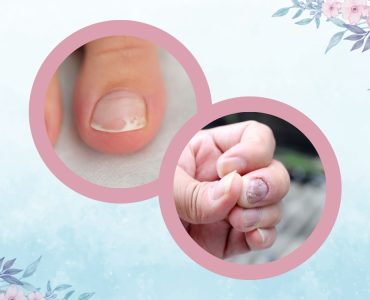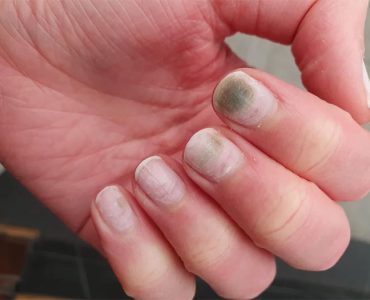While nail fungus may seem like a superficial and localized issue, recent research suggests that it could be associated with various underlying health conditions. The health of our nails can serve as a window into our overall well-being, and understanding this connection is crucial for both the prevention and management of related health issues.

In this article, we will explore the potential links between nail fungus and other health conditions, providing you with valuable insights into the significance of nail health beyond mere aesthetics.
Nail Fungus as a Potential Indicator
Nail fungus, beyond being a common and bothersome condition, has emerged as a potential indicator of underlying health issues. Our nails, often overlooked, can serve as a window into our overall well-being.
Changes in their appearance, texture, and growth patterns may signify more than just a cosmetic concern. In fact, research suggests that nail fungus could be linked to various health conditions, making it essential to pay attention to these seemingly innocuous signs.
Exploring the Connection Between Nail Health and Overall Well-Being
When it comes to our health, we often focus on major symptoms or specific tests, neglecting the seemingly trivial aspects like our nails. However, nails can provide valuable clues about our internal health.
Just as the eyes are said to be the windows to the soul, our nails can reveal underlying conditions that may otherwise go unnoticed. Therefore, understanding the potential link between nail fungus and other health conditions is crucial.
How Nail Fungus Could Be Indicative of Underlying Health Conditions
Nail fungus, medically known as onychomycosis, occurs when fungi invade and infect the nails. While it can be caused by various factors such as poor nail hygiene, trauma, or exposure to warm and damp environments, its presence may be more than just a localized infection. Studies have found associations between nail fungus and certain health conditions, suggesting that its presence could serve as an indicator of underlying issues.

Research Findings and Studies Supporting the Link
Several studies have investigated the relationship between nail fungus and other health conditions. For example, a study published in the Journal of the American Academy of Dermatology found a higher prevalence of nail fungus in individuals with compromised immune systems.
Other research has highlighted connections between nail fungus and conditions like diabetes, peripheral artery disease, and autoimmune disorders. Although further research is needed to establish definitive causal relationships, these findings provide valuable insights into the potential significance of nail health.
Nail Fungus and Immune System
The immune system plays a vital role in defending our bodies against infections, including those caused by fungi. When our immune system is compromised or weakened, it can have implications for our overall health, including our nails. Understanding the relationship between the immune system and nail fungus is key to comprehending why some individuals may be more susceptible to these fungal infections.
The Relationship Between Compromised Immunity and Nail Fungus
The immune system acts as a defense mechanism, protecting our bodies from harmful invaders such as bacteria, viruses, and fungi. However, when the immune system is compromised or weakened, it may not be as effective in combating these pathogens. This weakened immune response can make individuals more susceptible to various infections, including nail fungus.
How a Weakened Immune System Can Contribute to The Development of Nail Fungus
When the immune system is unable to mount a robust defense, fungal pathogens can easily invade and infect the nails. In the case of nail fungus, the causative fungi, such as dermatophytes, can penetrate the nail plate and establish an infection. A compromised immune system may struggle to eliminate these pathogens, allowing the infection to persist and potentially spread to other nails.
Read This Next:
Autoimmune Disorders and Their Association with Nail Fungal Infections
Autoimmune disorders, conditions in which the immune system mistakenly attacks healthy tissues, can also contribute to the development and severity of nail fungal infections. Disorders such as psoriasis, lupus, and rheumatoid arthritis, which involve immune system dysfunction, have been associated with an increased risk of nail fungus. The chronic inflammation and immune dysregulation characteristic of autoimmune disorders create an environment that is favorable for fungal growth.
Nail Fungus and Diabetes
Diabetes, a chronic metabolic disorder characterized by high blood sugar levels, can have far-reaching effects on various parts of the body, including the nails. Individuals with diabetes are at an increased risk of developing nail fungus, making it essential to understand the relationship between these two conditions and take proactive measures to maintain nail health.
The Impact of Diabetes on Nail Health
Diabetes can affect the blood vessels and nerves, impairing circulation and sensation in the extremities. This can lead to a range of nail-related problems, including brittle nails, slow nail growth, and changes in nail texture and color. The altered nail environment, combined with the reduced ability to fight off infections, creates an ideal breeding ground for fungi, increasing the risk of nail fungus in individuals with diabetes.
Increased Susceptibility to Nail Fungus in Individuals with Diabetes
The compromised circulation and impaired immune response associated with diabetes can make individuals more susceptible to fungal infections, including nail fungus. High blood sugar levels can also provide an additional source of nutrients for the fungi, promoting their growth and persistence. Therefore, individuals with diabetes should be vigilant about their nail health and take steps to prevent and manage nail fungus.
Importance of Proper Foot and Nail Care for Diabetes Patients
Proper foot and nail care is crucial for individuals with diabetes to prevent complications such as fungal infections. This includes regular inspection of the nails, keeping them clean and trimmed, wearing comfortable and well-fitting shoes, and avoiding prolonged exposure to moisture. Seeking prompt medical attention if any signs of nail fungus are observed is essential for early intervention and effective management.

Nail Fungus and Circulation Problems
Healthy blood circulation is vital for delivering oxygen and nutrients to various parts of the body, including the nails. When circulation is compromised, it can have implications for nail health and increase the risk of developing nail fungus.
Understanding the connection between nail fungus and circulation problems is important for recognizing the factors that contribute to fungal infections and implementing preventive measures.
Understanding the Connection Between Poor Circulation and Nail Fungus
Poor circulation, often associated with conditions such as peripheral artery disease (PAD) or other circulatory disorders, can impact nail health. When blood flow to the extremities is reduced, it can result in insufficient oxygen and nutrients reaching the nails. This weakened blood supply can weaken the nail structure and create an environment conducive to the growth of fungi.
How Reduced Blood Flow Affects Nail Health
Inadequate blood flow can lead to brittle nails, slow nail growth, and increased susceptibility to fungal infections. The nails may become dry, discolored, and prone to cracking or breaking. Additionally, the compromised circulation hampers the immune response, making it harder for the body to fight off fungal infections and increasing the risk of nail fungus development.
Conditions Such as Peripheral Artery Disease and Their Influence on Nail Fungal Infections
Peripheral artery disease (PAD) is a condition characterized by the narrowing of the arteries that supply blood to the extremities. Individuals with PAD often experience reduced blood flow to their feet and hands.
This reduced circulation can affect the health of the nails, making them more vulnerable to fungal infections. Proper management of conditions like PAD, including lifestyle modifications and medical interventions, is crucial for preserving overall circulatory health and minimizing the risk of nail fungus.
Conclusion
In conclusion, the connection between nail fungus and other health conditions presents a fascinating area of study that highlights the interplay between our body’s internal health and external manifestations.
While further research is needed to establish definitive causal relationships, the existing evidence suggests that nail fungus could be indicative of underlying health issues such as compromised immunity, diabetes, and circulation problems.









